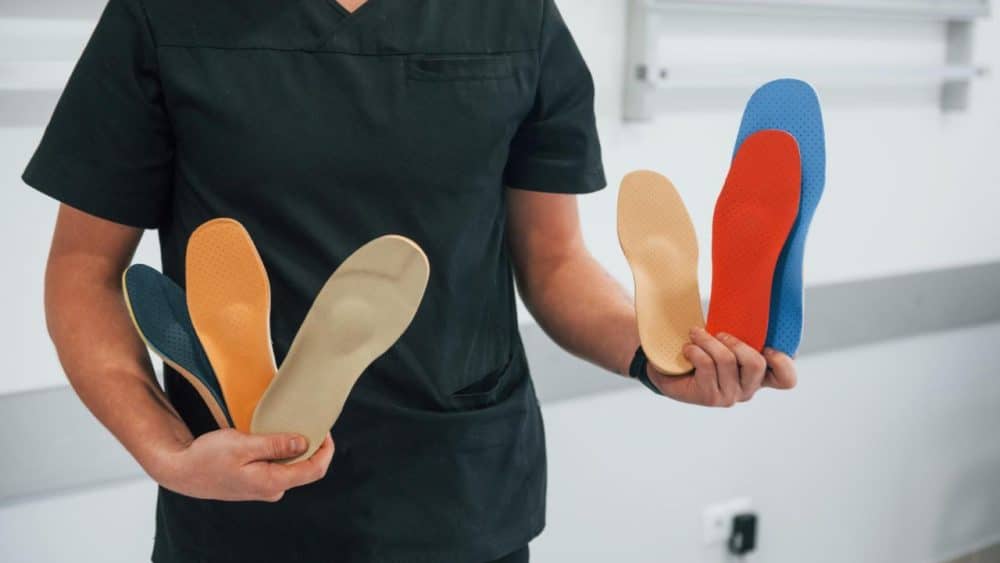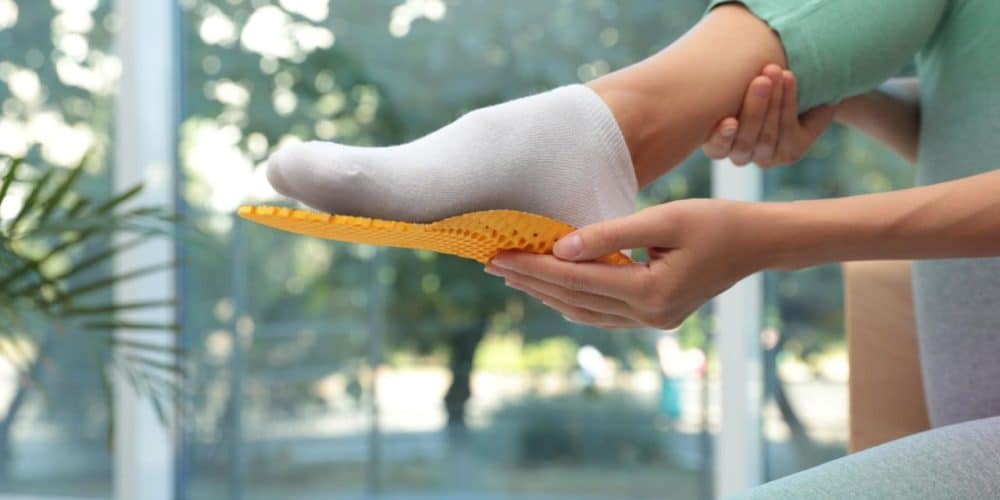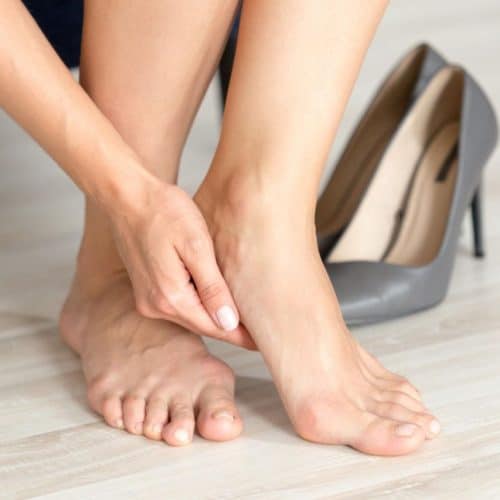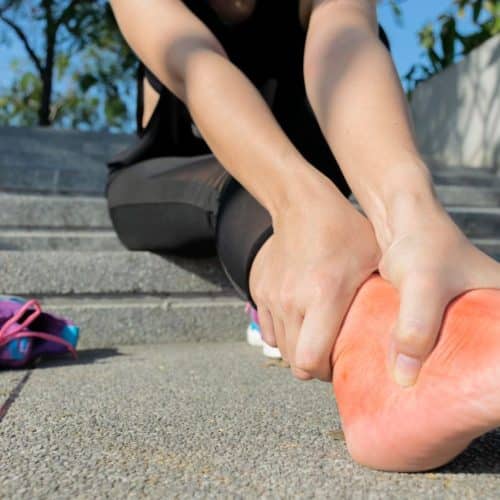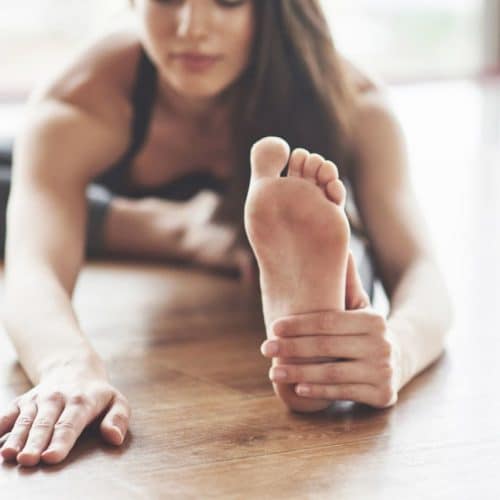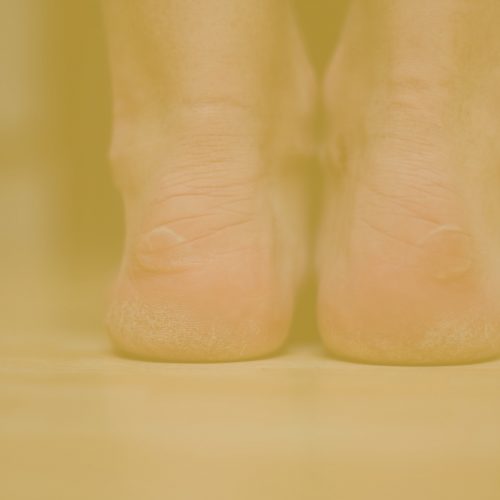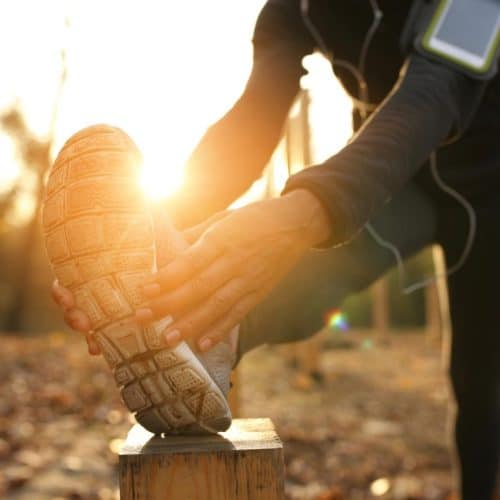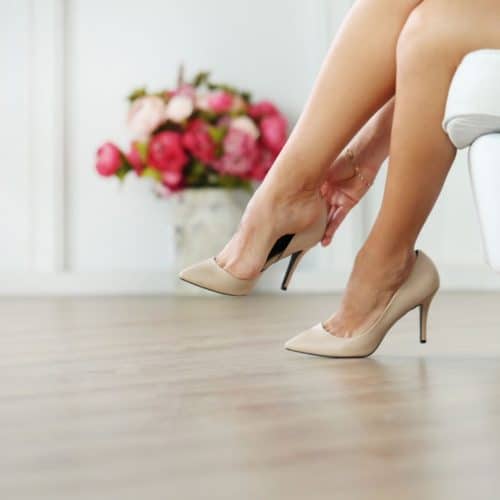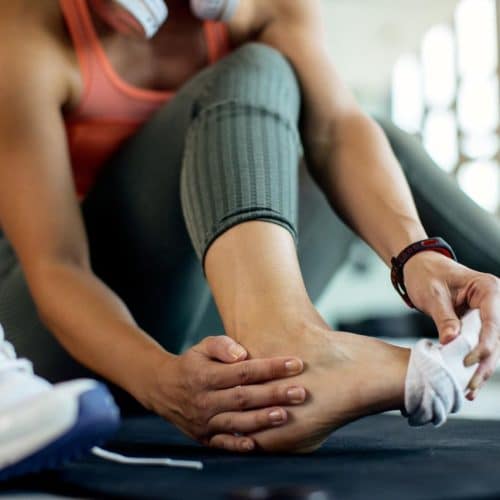Have you ever considered the incredible work your feet do daily? They are essential to your life, from supporting your body weight to facilitating movement. But what happens when your feet require extra support? Welcome to “A Complete Guide to Foot Support & Orthotics,” where we delve into foot health and solutions. Whether you’re an athlete seeking performance enhancement or simply wanting to walk pain-free, this guide has you covered.
In this comprehensive guide, we explore the world of foot support and orthotics—a journey through the science of corrective shoe inserts and specialised footwear. Discover how these devices can address various foot conditions, from flat arches to overpronation, and enhance your overall quality of life. Our guide offers insights into choosing the right orthotics for your unique needs, helping you take confident steps towards improved foot health.
So, without any further ado, let’s embark on this enlightening journey into foot support and orthotics. Your feet deserve the best—let’s ensure they receive it.
Understanding Foot Mechanics
Before we explore the realm of orthotics and foot support, it’s crucial to gain a comprehensive understanding of the intricate mechanics that govern our feet. Often taken for granted, our feet are remarkable structures that play a pivotal role in maintaining balance, supporting our weight, and facilitating our everyday movements.
1. The Complex Architecture of the Feet
Your feet are marvels of engineering, consisting of a complex arrangement of bones, muscles, tendons, ligaments, and joints. There are 26 bones in each foot, all working harmoniously to provide the support and flexibility required for various activities.
2. Weight Distribution and Shock Absorption
One of the primary functions of your feet is to distribute your body weight evenly across the ground. This distribution is vital to prevent undue stress on specific areas, which could lead to discomfort or injury. Additionally, your feet act as shock absorbers, cushioning the impact of each step to reduce strain on your joints and the rest of your body.
3. The Arch Structures
The arches of your feet are intricate structures that contribute significantly to their mechanics. These arches provide both stability and flexibility. The longitudinal arch runs along the length of your foot, while the transverse arch spans its width. These arches are maintained by the alignment of bones and supported by muscles and ligaments.
4. Muscle and Tendon Coordination
A network of muscles and tendons orchestrates the movement of your feet. These structures work synchronously to create intricate motions, allowing you to walk, run, jump, and perform various activities. The Achilles tendon, for instance, connects your calf muscles to your heel bone, enabling powerful propulsion during walking and running.
5. Normal Gait Patterns
How you walk, known as your gait, is a dynamic process influenced by your foot mechanics. A typical gait involves a heel strike, a rolling motion through the middle of the foot, and a push-off from the toes. An irregular gait can lead to various issues, highlighting the importance of maintaining proper foot mechanics.
6. Impact on Overall Health
The health of your feet has a profound impact on your overall well-being. Misaligned foot mechanics can lead to imbalances in your posture, which can subsequently cause problems in your ankles, knees, hips, and even your spine. By understanding and caring for your foot mechanics, you invest in a healthier, more active lifestyle.
What Are Orthotics?
Orthotics are specialised devices designed to provide additional support, correct irregular walking patterns, and alleviate discomfort in the feet and lower limbs. These custom-made or prefabricated inserts can significantly affect how you move, stand, and experience daily activities.
1. Understanding Their Purpose
Orthotics serve a crucial purpose in improving foot function and promoting overall comfort. They are particularly beneficial for individuals with various foot conditions and injuries or those seeking preventive measures against potential foot problems. By addressing issues at the foundation – your feet – orthotics can have a positive ripple effect on your entire body’s alignment and posture.
2. Correcting Imbalances
One of the primary roles of orthotics is to correct biomechanical imbalances. These imbalances can stem from flat feet, high arches, overpronation (inward rolling of the foot), or supination (outward rolling of the foot). By providing the necessary support and cushioning, orthotics can help align your feet properly, leading to more balanced movement.
3. Alleviating Discomfort
Orthotics can be a game-changer for those experiencing foot pain, discomfort, or fatigue. They offer targeted relief to areas of high pressure, reducing strain on specific points. Conditions like plantar fasciitis, bunions, and arch pain can be mitigated with orthotic intervention, enhancing your ability to engage in daily activities pain-free.
4. Types of Orthotics
1. Prefabricated Orthotics
These are off-the-shelf orthotic inserts available at drugstores or online. They offer general support and can be suitable for mild discomfort or temporary relief. However, they might not address specific issues as effectively as custom-made options.
2. Custom-Made Orthotics
Custom orthotics are meticulously crafted to accommodate the unique contours of your feet. They consider your foot structure, gait, and any existing problems. This personalised approach ensures optimal support and comfort, making them ideal for individuals with complex foot issues.
5. How Orthotics Work
Orthotics work by modifying the way your feet interact with the ground. They provide corrective forces that help realign your feet, legs, and body. Enhancing foot mechanics reduces excessive pronation or supination, distributes pressure more evenly, and provides cushioning where needed most.
6. Who Can Benefit from Orthotics?
Orthotics can benefit a wide range of individuals:
- Athletes: Sports often put extra stress on the feet. Orthotics can improve performance, reduce the risk of injuries, and aid in post-injury recovery.
- Working Professionals: Those who spend long hours on their feet can experience fatigue and discomfort. Orthotics offer relief and promote better posture.
- Seniors: Aging can lead to changes in foot structure and function. Orthotics provide much-needed support for seniors with arthritis or fallen arches.
- Children: Orthotics can correct alignment issues early in life, ensuring healthy foot development and preventing future problems.
Orthotics are valuable tools for individuals seeking improved foot comfort, alignment, and overall quality of life. Whether you’re an athlete aiming for optimal performance or seeking relief from chronic foot pain, orthotics offer a customisable solution that addresses your unique needs. By working in harmony with your feet, orthotics provide the support necessary to keep you moving confidently and comfortably.
Common Foot Problems Requiring Orthotics
Our feet are remarkable structures, but they’re also susceptible to various conditions that can cause discomfort and affect our quality of life. Orthotics can play a crucial role in alleviating the symptoms of these common foot problems, providing targeted support and relief.
1. Plantar Fasciitis
Plantar fasciitis is a prevalent condition characterised by plantar fascia inflammation – the thick band of tissue that connects the heel bone to the toes. It often leads to stabbing pain in the heel, especially upon taking the first steps in the morning or after long rest periods. Orthotics can offer much-needed arch support, reduce strain on the plantar fascia, and distribute pressure more evenly across the foot.
2. Bunions and Corns
Bunions are bony protrusions that typically form at the base of the big toe. They can cause discomfort, redness, and swelling. Corns, conversely, are areas of thickened skin caused by friction or pressure. Both conditions can be aggravated by improper footwear or irregular foot mechanics. Orthotics can help alleviate pressure on these areas, reducing pain and preventing further irritation.
3. Flat Feet or Fallen Arches
Flat feet occur when the arches of the feet are lower than usual, causing the entire sole to make contact with the ground. This condition can lead to overpronation and imbalances in the lower body. Orthotics designed to provide arch support can help maintain proper alignment, distribute weight more evenly, and reduce strain on the feet, ankles, and knees.
Finding Quality Orthotics: What to Look For
When searching for orthotics that provide optimal support and comfort, consider the following factors to ensure you’re investing in a quality product:
- Material Quality: Choose orthotics made from durable, high-quality materials that offer support and cushioning.
- Arch Support: Look for orthotics that provide adequate arch support to address imbalances and promote proper foot alignment.
- Customisability: Custom-made orthotics are tailored to your unique foot shape and needs, offering higher comfort and effectiveness.
- Fit and Comfort: Opt for orthotics that fit comfortably within your shoes without causing discomfort or crowding.
- Heel Cup Design: A well-designed heel cup helps stabilise the foot and improves overall alignment.
- Cushioning: Orthotics with cushioning in the right areas can enhance comfort and reduce impact during movement.
- Breathability: Choose orthotics with breathable materials to prevent excessive moisture buildup and odours.
- Adjustability: Some orthotics allow for adjustments or modifications as your needs change.
- Customer Reviews: Check for reviews from other users to gauge the effectiveness and comfort of the orthotics.
- Brand Reputation: Opt for reputable brands known for their quality and commitment to foot health.
- Price Consideration: While quality matters, balance it with your budget to find orthotics that offer value for money.
Remember, finding the right orthotics is a personal process that involves considering your unique needs and preferences. Prioritise comfort, support, and expert advice to make an informed decision that enhances your foot health and overall well-being.
Choosing the Right Orthotics
Selecting the appropriate orthotics involves carefully considering your needs, lifestyle, and foot condition. While orthotics can provide invaluable support and relief, the effectiveness of your chosen pair largely depends on how well they align with your requirements.
1. Professional Guidance
Seeking the guidance of a podiatrist is a crucial step in choosing the right orthotics. These experts can assess your foot structure, gait, and any existing problems to recommend the most suitable orthotic solution. They might conduct a gait analysis, examine your footwear choices, and discuss your daily activities to ensure the orthotics align with your lifestyle.
2. Footwear Compatibility
Consider the types of shoes you wear regularly. Some orthotics work better with specific footwear styles. For instance, if you often wear athletic shoes, ensure the orthotics you choose fit comfortably within them without causing any crowding or discomfort.
3. Material Quality
Orthotics are made from a variety of materials, ranging from foam and gel to more rigid materials. The choice of material can impact factors such as durability, cushioning, and support. Discuss material options with your podiatrist to determine what would work best for your needs.
4. Trial and Adjustment Period
It’s important to note that there might be an adjustment period when you start using orthotics, especially if you’ve never worn them before. Wear them for short periods and gradually increase the duration as your feet adapt. Consult your podiatrist for guidance if you experience persistent discomfort or pain.
5. Reevaluation
As your foot health changes, your orthotics must be adjusted or replaced. Regular check-ins with your podiatrist can ensure that your orthotics continue to provide the necessary support and comfort.
Getting Accustomed to Orthotics
Introducing orthotics to your daily routine can be a transformative experience for your foot health and overall well-being. However, like any change, it’s important to allow your feet time to adapt to the new support they provide. Here’s a closer look at what to expect and how to ensure a smooth transition.
1. Gradual Integration
When you first start wearing orthotics, it’s advisable to introduce them gradually. Begin by wearing them for shorter periods, such as an hour or two each day. This allows your feet and muscles to acclimate to the new support and alignment.
2. Listen to Your Body
Pay close attention to how your feet feel when wearing orthotics. It’s normal to experience some initial discomfort or unusual sensations. However, if you feel persistent pain, pressure points, or any discomfort that worsens over time, it’s essential to consult your podiatrist. They can offer insights into whether adjustments are needed.
3. Adapting Your Activities
Avoid strenuous or prolonged activities that could strain your feet during the initial adjustment period might be wise. Instead, focus on light walking or everyday tasks to allow your feet to adapt without overexertion.
4. Gradual Increase in Wear Time
As your feet become accustomed to orthotics, gradually increase the time you wear them daily. This can be extended to wearing them for most of your waking hours. However, providing some rest periods for your feet is still beneficial, especially during the initial weeks.
5. Foot Exercises
Incorporating gentle foot exercises into your routine can complement getting accustomed to orthotics. Exercises like toe curls, arch lifts, and ankle rotations can help strengthen the muscles in your feet, facilitating a more seamless adaptation.
6. Patience and Persistence
Remember that adapting to orthotics is a process that varies from person to person. Be patient with yourself and your feet. Over time, as your muscles and ligaments adjust, you’ll likely notice improvements in your comfort and mobility.
Caring for Your Orthotics
Proper maintenance of your orthotics is essential to ensure their longevity and continued effectiveness. By following a few simple care practices, you can extend the lifespan of your orthotics and enjoy their benefits for a longer period.
1. Regular Cleaning
Orthotics can accumulate dirt, sweat, and odour over time. Wash them down regularly with a damp cloth or mild soap and water to keep them clean and hygienic. Allow them to air dry completely before placing them back in your shoes.
2. Avoid Extreme Temperatures
Exposing your orthotics to extreme heat or cold can damage their materials and compromise their structural integrity. Avoid leaving them in direct sunlight, near heaters, or in the car on hot days. Extreme temperatures can cause warping, cracking, or distortion of the materials.
3. Inspect for Wear and Tear
Regularly inspect your orthotics for signs of wear and tear. Check for any cracks, fraying, or changes in shape. If you notice any damage, it’s best to address it promptly to prevent discomfort and ensure optimal support.
4. Replace When Necessary
Even with proper care, orthotics have a limited lifespan. Prefabricated orthotics might need replacement every 6-12 months, while custom-made orthotics can last 2-5 years or more. If you notice a decrease in comfort or effectiveness, it’s a sign that it’s time for a replacement.
5. Rotate Your Orthotics
If you have multiple pairs of shoes, consider rotating your orthotics among them. This gives your feet a change of support, allows your orthotics to air out, and prevents excessive wear on a single pair.
6. Storage Matters
When not using your orthotics, store them in a cool, dry place away from direct sunlight and heat sources. Placing them in a designated orthotic case or a clean, breathable pouch can help protect them from damage.
7. Keep Shoes Clean
Clean your shoes regularly to prevent dirt and debris from transferring onto your orthotics. A clean shoe environment can improve your orthotics’ overall hygiene and effectiveness.
8. Professional Check-ups
Bring your orthotics for inspection during your regular visits to a podiatrist. They can assess the condition of your orthotics and make any necessary adjustments to ensure continued support and comfort.
When to Consult a Podiatrist
Consulting a podiatrist is essential for accurate diagnosis, personalised advice, and appropriate treatment. If you experience any of the following signs or symptoms, it’s time to seek professional guidance:
- Persistent Foot Pain: If you’re dealing with chronic foot pain that doesn’t improve with rest or basic care, a podiatrist can help identify the underlying cause and recommend suitable interventions.
- Changes in Foot Appearance: Any unusual changes in the appearance of your feet, such as swelling, redness, deformities, or skin abnormalities, should be assessed by a podiatrist.
- Difficulty Walking: If walking becomes painful or uncomfortable, especially if it affects your daily activities, it’s a clear indicator to consult a professional.
- Foot Numbness or Tingling: Sensations of numbness, tingling, or a loss of feeling in your feet can indicate nerve-related issues that warrant expert evaluation.
- Persistent Ingrown Toenails: Ingrown toenails can lead to infection if not properly treated. A podiatrist can provide the necessary care to prevent complications.
- Severe Corns or Calluses: Corns or calluses that are painful, recurrent, or don’t respond to home treatments require professional attention.
- Foot Injury: Any foot injury, such as fractures, sprains, or twists, should be assessed by a podiatrist to ensure proper healing and prevent long-term issues.
- Changes in Gait: If you notice changes in your walking pattern or gait, it might indicate underlying biomechanical issues that a podiatrist can address.
- Diabetes or Circulatory Issues: Individuals with diabetes or circulatory problems should have regular foot check-ups to prevent complications and ensure early detection of any issues.
- Custom Orthotics: Consulting a podiatrist is essential for accurate assessment and fitting if considering custom orthotics.
Remember, a podiatrist’s expertise can help you understand your foot health, diagnose conditions accurately, and recommend the most appropriate treatments or interventions to ensure optimal foot function and comfort.
Myths About Orthotics Debunked
It’s common for misconceptions to circulate in the world of foot health and orthotics. Let’s debunk some of the most prevalent myths to provide clarity and accurate information:
1. Orthotics Are Only for Elderly People
Myth: Orthotics are solely for the elderly population.
Debunked: Orthotics benefit people of all ages. They’re not limited to the elderly. Individuals dealing with foot discomfort, imbalances, injuries, or those seeking preventive measures can all find relief and support from orthotics.
2. Orthotics Can Cure All Foot Problems
Myth: Orthotics have the power to cure all foot problems.
Debunked: While orthotics provide substantial support and relief, they might only cure some foot issues. They are most effective in a comprehensive foot care plan that may include exercises, proper footwear, and other treatments.
3. Orthotics Are Uncomfortable to Wear
Myth: Orthotics are uncomfortable and difficult to wear.
Debunked: Modern orthotics are designed with comfort in mind. While there might be an initial adjustment period, properly fitting orthotics should not cause significant discomfort. Gradual integration and choosing the right type of orthotics can enhance comfort.
4. Custom Orthotics Are Unnecessary
Myth: Custom orthotics are unnecessary, and prefabricated options work just as well.
Debunked: While prefabricated orthotics offer basic support, they might not address specific foot conditions as effectively as custom-made options. Custom orthotics are tailored to your unique foot shape and needs, providing higher support and comfort.
5. Orthotics Weaken Foot Muscles
Myth: Using orthotics weakens foot muscles over time.
Debunked: Orthotics are designed to support and alleviate discomfort, not weaken foot muscles. They can help correct imbalances and improve overall foot function. Foot exercises can complement orthotics by strengthening foot muscles.
Conclusion
In conclusion, this comprehensive guide has delved into foot support and orthotics, shedding light on maintaining proper foot health. From understanding the biomechanics of the feet to exploring various orthotic solutions, it’s evident that caring for our feet goes beyond just comfort—a cornerstone of overall well-being.
Individuals can significantly enhance their quality of life by prioritising foot support and investing in the right orthotics. Whether you’re an athlete aiming to improve performance or seeking relief from chronic foot pain, the right orthotics can make a difference.
But remember, the journey to optimal foot health doesn’t end here. It’s an ongoing process that requires attention, care, and awareness. So, let’s wrap up with a thought-provoking question:
Have you ever considered your feet’ impact on daily life and activities? Share your thoughts and experiences in the comments below, and let’s continue the conversation on how foot support and orthotics have influenced your well-being!
Content Summary
- In this comprehensive guide, we explore the world of foot support and orthotics—a journey through the science of corrective shoe inserts and specialised footwear.
- Discover how these devices can address various foot conditions, from flat arches to overpronation, and enhance your overall quality of life.
- Before we explore the realm of orthotics and foot support, it’s crucial to gain a comprehensive understanding of the intricate mechanics that govern our feet.
- Often taken for granted, our feet are remarkable structures that play a pivotal role in maintaining balance, supporting our weight, and facilitating our everyday movements.
- How you walk, known as your gait, is a dynamic process influenced by your foot mechanics.
- An irregular gait can lead to various issues, highlighting the importance of maintaining proper foot mechanics.
- The health of your feet has a profound impact on your overall well-being.
- Misaligned foot mechanics can lead to imbalances in your posture, which can subsequently cause problems in your ankles, knees, hips, and even your spine.
- By understanding and caring for your foot mechanics, you invest in a healthier, more active lifestyle.
- Orthotics are specialised devices designed to provide additional support, correct irregular walking patterns, and alleviate discomfort in the feet and lower limbs.
- By addressing issues at the foundation – your feet – orthotics can have a positive ripple effect on your entire body’s alignment and posture.
- One of the primary roles of orthotics is to correct biomechanical imbalances.
- Custom orthotics are meticulously crafted to accommodate the unique contours of your feet.
- They consider your foot structure, gait, and any existing problems.
- Orthotics work by modifying the way your feet interact with the ground.
- Sports often put extra stress on the feet.
- Orthotics are valuable tools for individuals seeking improved foot comfort, alignment, and overall quality of life.
- Whether you’re an athlete aiming for optimal performance or seeking relief from chronic foot pain, orthotics offer a customisable solution that addresses your unique needs.
- By working in harmony with your feet, orthotics provide the support necessary to keep you moving confidently and comfortably.
- Orthotics designed to provide arch support can help maintain proper alignment, distribute weight more evenly, and reduce strain on the feet, ankles, and knees.
- Choose orthotics made from durable, high-quality materials that offer support and cushioning.
- Look for orthotics that provide adequate arch support to address imbalances and promote proper foot alignment.
- Selecting the appropriate orthotics involves carefully considering your needs, lifestyle, and foot condition.
- Seeking the guidance of a podiatrist is a crucial step in choosing the right orthotics.
- Consult your podiatrist for guidance if you experience persistent discomfort or pain.
- As your foot health changes, your orthotics must be adjusted or replaced.
- Introducing orthotics to your daily routine can be a transformative experience for your foot health and overall well-being.
- Pay close attention to how your feet feel when wearing orthotics.
- However, if you feel persistent pain, pressure points, or any discomfort that worsens over time, it’s essential to consult your podiatrist.
- As your feet become accustomed to orthotics, gradually increase the time you wear them daily.
- Incorporating gentle foot exercises into your routine can complement getting accustomed to orthotics.
- Be patient with yourself and your feet.
- Proper maintenance of your orthotics is essential to ensure their longevity and continued effectiveness.
- By following a few simple care practices, you can extend the lifespan of your orthotics and enjoy their benefits for a longer period.
- Even with proper care, orthotics have a limited lifespan.
- If you have multiple pairs of shoes, consider rotating your orthotics among them.
- Clean your shoes regularly to prevent dirt and debris from transferring onto your orthotics.
- Bring your orthotics along for inspection during your regular visits to a podiatrist.
- Consulting a podiatrist is essential for accurate diagnosis, personalised advice, and appropriate treatment.
- Any unusual changes in the appearance of your feet, such as swelling, redness, deformities, or skin abnormalities, should be assessed by a podiatrist.
- If you notice changes in your walking pattern or gait, it might indicate underlying biomechanical issues that a podiatrist can address.
- Individuals with diabetes or circulatory problems should have regular foot check-ups to prevent complications and ensure early detection of any issues.
- Consulting a podiatrist is essential for accurate assessment and fitting if considering custom orthotics.
- Remember, a podiatrist’s expertise can help you understand your foot health, diagnose conditions accurately, and recommend the most appropriate treatments or interventions to ensure optimal foot function and comfort.
- It’s common for misconceptions to circulate in the world of foot health and orthotics.
- Myth: Orthotics are solely for the elderly population.
- Debunked: Orthotics benefit people of all ages.
- Myth: Orthotics have the power to cure all foot problems.
- They are most effective in a comprehensive foot care plan that may include exercises, proper footwear, and other treatments.
- Gradual integration and choosing the right type of orthotics can enhance comfort.
- Custom orthotics are tailored to your unique foot shape and needs, providing higher support and comfort.
- Foot exercises can complement orthotics by strengthening foot muscles.
- In conclusion, this comprehensive guide has delved into foot support and orthotics, shedding light on maintaining proper foot health.
- From understanding the biomechanics of the feet to exploring various orthotic solutions, it’s evident that caring for our feet goes beyond just comfort—a cornerstone of overall well-being.
- Individuals can significantly enhance their quality of life by prioritising foot support and investing in the right orthotics.
- Whether you’re an athlete aiming to improve performance or seeking relief from chronic foot pain, the right orthotics can make a difference.
- But remember, the journey to optimal foot health doesn’t end here.
- It’s an ongoing process that requires attention, care, and awareness.
FAQs
1. Can I buy orthotics without a prescription?
You can purchase prefabricated orthotics without a prescription from drugstores or online retailers. However, for custom-made orthotics tailored to your specific needs, it’s advisable to consult a podiatrist.
2. How long do orthotics typically last?
The lifespan of orthotics varies based on factors like usage, material quality, and maintenance. On average, prefabricated orthotics might last around 6-12 months, while custom-made ones can last 2-5 years or more with proper care.
3. Can I use orthotics in any type of shoes?
In most cases, yes. However, shoes with minimal space or those needing more proper support might not accommodate orthotics well. It’s best to choose shoes with removable insoles and ample room to accommodate the orthotics comfortably.
4. Are there any specific brands of shoes you recommend for orthotic wearers?
While individual preferences vary, some brands are known for offering supportive footwear suitable for orthotic wearers. These include New Balance, Brooks, Asics, and Vionic. It’s essential to try on different brands and styles to find what works best for you.
5. Can orthotics help with lower back pain?
Yes, orthotics can help alleviate lower back pain. They can correct foot imbalances that contribute to posture issues, which may affect the lower back. However, it’s recommended to consult a healthcare practitioner to determine the exact cause of your lower back pain and the most appropriate treatment.


